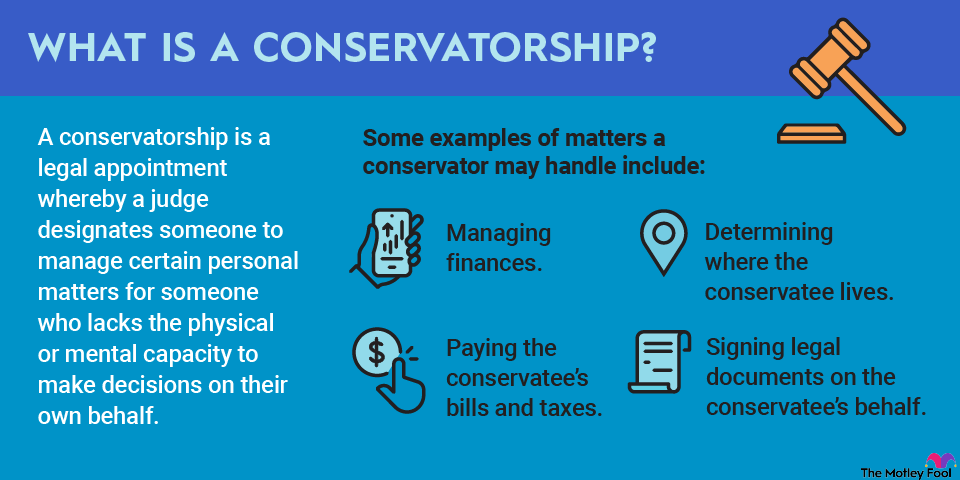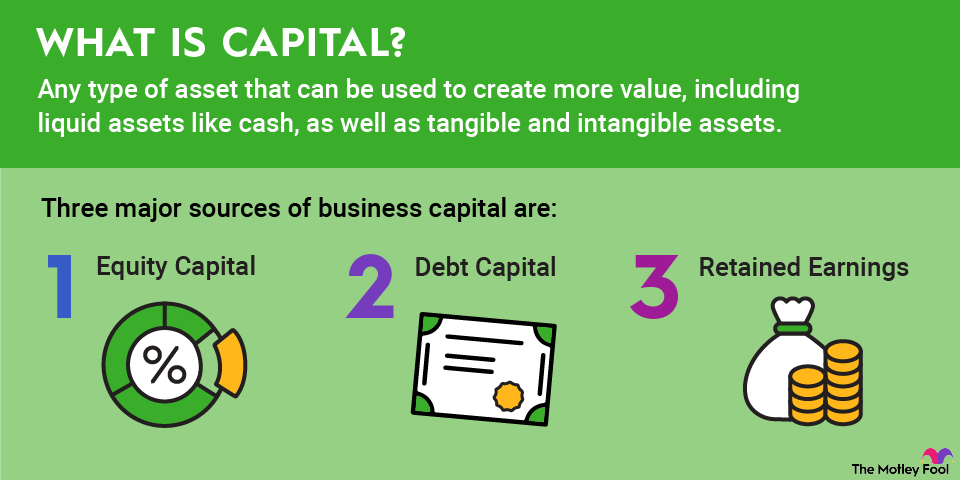If someone is unable to handle their financial or personal affairs, they may be placed in a conservatorship. A conservatorship is a legal arrangement whereby a judge decides who should manage a person’s affairs. A conservator is appointed to make decisions on behalf of the conservatee -- the person who’s mentally or physically incapacitated. In this article, we’ll explain how a conservatorship works as well as the duties and responsibilities of a conservator.

What is a conservatorship?
A conservatorship is a legal appointment whereby a judge designates someone to manage certain personal matters, including finances, for someone who lacks the physical or mental capacity to make decisions on their own behalf. The terms conservatorship and adult guardianship are often used interchangeably, but in some states, conservatorship refers to an arrangement for an adult ward, while guardianship refers to an arrangement to handle a minor’s affairs.
The process of establishing a conservatorship usually happens when someone petitions a court to appoint a conservator for an individual. Before a person can be placed in a conservatorship, they must undergo a mental health examination. A diagnosis from a psychiatrist or another type of physician is usually required before a court will approve a conservatorship. A judge may appoint a family member -- often the person’s spouse, parent, or adult child -- or nonrelative to serve as conservator.
Some examples of matters a conservator may handle on the conservatee’s behalf include:
- Managing finances, including investments.
- Determining where the conservatee lives, including whether they need to be placed in an assisted living or long-term-care facility.
- Paying the conservatee’s bills and taxes using the conservatee’s assets.
- Signing legal documents on the conservatee’s behalf.
- Maintaining adequate insurance on the conservatee’s property.
- Paying the conservatee’s food, healthcare, and education expenses.
A conservator has a fiduciary responsibility, which means they’re required to act in the conservatee’s best interest. Conservators are prohibited from commingling their personal assets with the conservatee’s assets, borrowing from the person’s estate, or making highly risky investments using the person’s money. Conservators are usually paid for their services from the conservatee’s assets, as long as the court confirms the compensation is reasonable.
The conservator is required to file an inventory of the conservatee’s assets in court and to provide an accounting of any transactions involving the conservatee’s property.
Types of conservatorships
There are two main categories of conservatorships: general and limited. General conservatorships are commonly used to manage the affairs of elderly people with advanced Alzheimer’s disease or dementia. However, a general conservator may be appointed for a younger person in some circumstances, such as if they’re in a coma or otherwise severely disabled. Limited conservatorships are often used for adults with developmental disabilities and frequently allow for greater autonomy.
Separate conservatorships can be appointed for the same person: A conservator of the estate is charged with managing the person’s finances, while a conservator of the person is tasked with making decisions pertaining to their health and safety. The same person also can serve in both roles at the same time.
Business
Although a conservatorship is typically used for individuals, occasionally a business or organization can be placed in a conservatorship. This typically occurs when a company becomes insolvent and can no longer operate. Usually the company will be placed under the management of a government agency or another regulatory body.
Related investing topics
Example of a conservatorship
One of the most publicized examples of a conservatorship involved pop superstar Britney Spears and her father, Jamie Spears. In 2008, Britney Spears was placed in a conservatorship after her father petitioned a California court. The day before her father filed the petition, the pop star had been admitted to UCLA Medical Center on a psychiatric hold after police came to her home over a child custody dispute.
Jamie Spears was named both conservator of the estate and conservator of the person for his daughter, though he stepped down from his role as conservator of the person in 2019 and was replaced by a court-appointed third party. He remained the conservator of the estate for 13 years.
The arrangement drew scrutiny when Britney Spears began publicly speaking out against it and as her fans mounted the #FreeBritney campaign. Advocates for Britney Spears pointed out that despite her father’s claims that she couldn’t manage her own affairs, the star was able to record three albums and maintain a grueling performance schedule while the conservatorship was in effect. Documents obtained by The New York Times revealed that while Britney Spears received a $2,000 weekly allowance, her father received $16,000 a month for his role, plus $2,000 for office space.

















